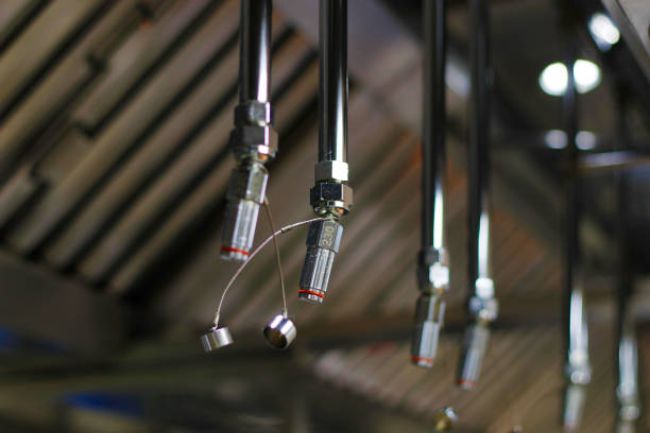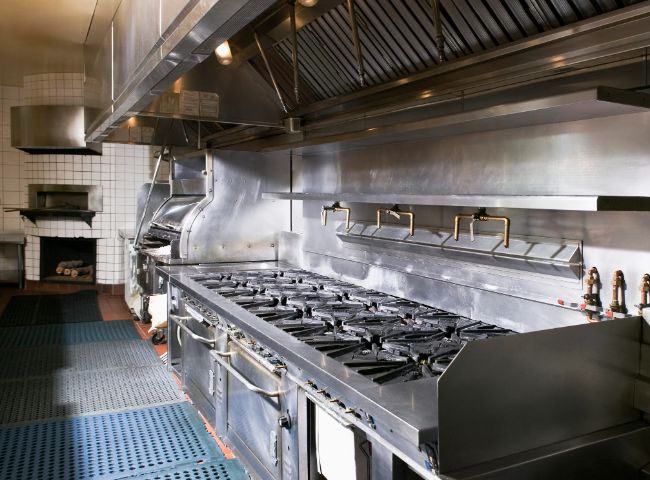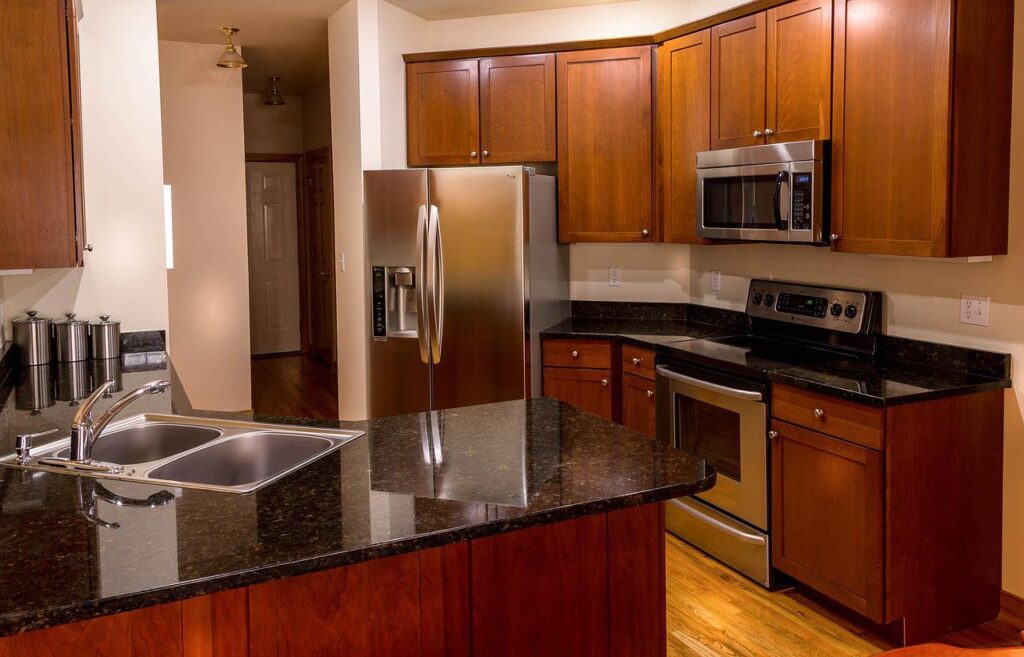Today, more than half of the world’s population lives in cities.
As such, urbanization brings along with it an increased risk of fire.
Many city properties are not equipped with modern firefighting equipment such as sprinklers and hoses.
Instead, they have a kitchen hood fire suppression system that helps contain a fire and prevent potential loss.
A kitchen hood fire suppression system is present within the kitchen hood or placed separately above the cooking appliances to help cease cooking equipment fires.
The system helps extinguish the fire without shutting down the operation of the entire kitchen.
Moreover, it also ensures the safety of the working staff.
On average, a suppression system installed and good to go costs around 2,000 to 6,500 dollars.
However, the costs may be higher depending upon other factors.
This blog will explain everything you need to know about kitchen hood fire suppression system cost in 2022 and how you can estimate its value today.
Read along
Types Of Kitchen Hood Fire Suppression Systems

Although kitchen fire suppression systems may look alike externally, the extinguishing agent used within determines the kitchen hood fire suppression system cost.
Commonly there are five commercial kitchen suppression systems.
Their details are below.
Related Reading: Dimensions For Kitchen – Click Here To Read More.
Wet-Chemical Kitchen Hood Fire Suppression Systems
The wet-chemical kitchen suppression systems are often considered the traditional suppression systems.
As the name explains, these systems spray a wet substance on the fire.
The chemical reacts with the flaming oils and grease to produce a foam-like flowy liquid which cuts off the oxygen.
Ultimately putting out the fire.
Most commercial kitchens use wet chemical suppression systems because they have a quick fire-knocking ability.
Also, they don’t require heavy cleaning; you can easily clean the foam with a dry cloth.
The wet suppression systems have excellent coverage and discharge enough material to cover and cool off the affected area to prevent a reignition.
Dry Chemical Kitchen Hood Fire Suppression Systems
The second most common kitchen suppression systems are the dry chemical suppression system.
Dry chemical suppression systems are suitable for preventing fires in places where water is inaccessible or inappropriate.
These suppression systems are common for industrial uses.
The cost of kitchen hood fire suppression systems using dry chemical extinguishers is higher as they fit industrial uses more.
Dry chemical suppression systems fall into the ABC category of fire extinguishers.
It means they are fit for dealing with fires caused by:
- Paper,
- Trash,
- Paint,
- Solvents
- Electric short-circuits.
A dry chemical extinguisher doesn’t work effectively for cooling off burning oils or grease as the fire has a high temperature.
On the bright side, dry chemical suppression systems offer many benefits.
They are rechargeable and provide efficiency and easy utilization.
Their non-conduciveness makes them suitable for cooling off the liquid fires involved in electrical equipment.
Dry chemical suppressors are not great for putting off stovetop fires but work well for extinguishing the fires in electrical equipment such as dishwashers and ovens.
So, a commercial kitchen may use them—however, it’s best to consult an expert first.
Systems Utilizing Foam Kitchen Hood Fire Suppression Systems
Next comes the foam fire suppression systems.
These are similar to a sprinkler system but use a foamy substance to extinguish the fire.
The foam puts out the fire by separating the ignition source from the flammable substance.
It comprises air-filled bubbles that have a density lower than water.
Foam-based fire suppressors use air, water, and foam concentrate as the primary constituents.
Each manufacturer uses a different proportion of the ingredients depending upon the client’s needs.
Typical applications of foam-based suppression systems are in warehouses where hazardous fires ignite.
You may try using them in kitchen suppression systems by asking for a lighter customized blend, but it will consume more money.
The best thing about foam suppression systems is that they are eco-friendly.
They have excellent coverage, which allows them to put off a larger fire within seconds.
Furthermore, foam suppression systems make a perfect choice from a maintenance and cost-effectiveness perspective.
Clean Agent Kitchen Hood Fire Suppression Systems
Clean agent suppression systems use a gaseous chemical to extinguish the fire.
Commonly they are present in places where water-based or wet-chemicals extinguishers damage the present equipment.
Externally a clean agent suppression system looks like a sprinkler system.
Instead, the nozzles release gaseous substances.
Clean agent suppression systems are commonly present in server rooms and museums.
However, using these suppressors in a commercial kitchen is not the norm.
Hence, you must consult an expert.
The gases used in clean agent suppressors are perfectly safe for humans and the environment.
Moreover, they leave no residue upon evaporation, so there are no cleaning worries.
They significantly prevent downtime as the faculty can continue the work even when the suppression systems are operational.
It is essential because downtime in business means loss.
Carbon Dioxide Kitchen Hood Fire Suppression Systems
As you know, carbon dioxide is not safe for humans.
Therefore, using these fire suppression systems in commercial kitchens is not recommended without adequate safety devices like gas masks, etc.
CO2 suppression systems are present in areas with minimal human interaction, like
- Engine rooms
- Power stations
- Generator rooms.
Since fire needs oxygen to strive, a CO2 suppression system increases the CO2 concentration in the affected area, which puts out the fire.
CO2 is a colorless, non-conductive, and odorless gas; therefore, it does not damage the present equipment.
The benefits of carbon-dioxide fire suppression systems include minimal downtime and zero cleaning.
Moreover, they guarantee equipment safety because the extinguishing chemical (CO2) doesn’t affect the room’s things.
How A Kitchen Hood Fire Suppression System Works
Before you turn your cash into kitchen hood fire suppression system cost, it’s essential to know how a kitchen fire suppressor work.
A kitchen hood suppression system uses basic fire chemistry to work.
Fire thrives in the presence of oxygen, fuel, and heat.
Like a sprinkler, a suppression system activates when it senses a higher temperature than the specified level.
It discharges wet chemicals through the nozzles placed in the ventilator, appliances, and the cooking station hood to quench the flames.
Next, the system cuts off the gas supply to deprive the fire of fuel.
All these steps work to out the fire.
Some models also have a feature of cutting off the electrical supply of the appliance.
It is highly beneficial as sometimes the flames melt the electric wires inducing more flames.
A kitchen suppression system ensures the safety of faculty and equipment.
You don’t have to shut down the entire kitchen as it prevents the fire from affecting the working of other stations.
Cost Of Kitchen Hood Fire Suppression System
Now you know about the different kinds of suppression systems.
Let’s look into the costs of each of these types quickly.
Each tank of wet chemical kitchen hood fire suppression systems costs around $4000 to $6000.
Hence, the total cost depends on the number of appliances you aim to protect.
Next comes the dry chemical suppression systems.
Since dry chemical suppression systems are standard for industrial applications, their prices vary from manufacturer to manufacturer.
The clean agent suppression system’s costs are calculated based on cubic feet of the targeted space.
Hence, the price mainly depends on the expansiveness of the area you want to be secure.
In contrast, foam suppression systems cost around 35,000 to 45,000.
Lastly, there are carbon dioxide suppression systems.
Like the dry chemical suppression systems, their costs depend upon the number of tanks employed.
However, generally, the price is above 1,00,000 dollars.
Related Reading: Design Rules Of Kitchen – Read More.
Important Considerations When Purchasing a Kitchen Hood Fire Suppression System
Purchasing kitchen appliances is exciting in most cases.
But kitchen hood fire suppression system cost is significantly high, so it may not be possible to set up a kitchen fire suppressor when you are new.
Choosing The Right Type
Firstly, choosing the fitting hood for the kitchen suppression system is essential.
The market offers two kinds of hoods.
They are commonly designated as Type 1 or Type 2.
Type 1 hoods work for stovetops making greasy foods, such as;
- Fryers,
- Open-flame tops,
- Charbroilers
Type 2 hoods are suitable for kitchen appliances that don’t produce greasy products, like dishwashers, ovens, and other equipment.
Hence, you must use type 1 hoods for cooking ranges producing greasy smoke and type 2 hoods for lighter equipment containing moisture or steam.
Hood Design
1. Island Canopy Hoods
Island canopy hoods are best for island layout kitchens.
They hang from the ceiling covering the appliances.
These hoods should be used with similar appliances because a hood can be either Type 1 or Type 2.
2. Wall Mounted Hoods
Wall-mounted hoods cover the appliances aligned against the wall.
These hoods require more space than proximity hoods and have a higher exhaust rate.
3. Proximity Hoods
Lastly, there are the proximity hoods.
As the name specifies, they are not present atop the appliances.
Instead, they are placed near the appliances.
Proximity hoods are not suitable for frying and high-temperature cooking equipment but work best for lower exhaust appliances.
Size And Mounting Requirements
Buying the right type and hood design is not all for justifying the kitchen hood fire suppression system cost.
One must also pick a suitable match according to the available space and dimensions.
Usually, a fire suppression system extends a little bit longer than the appliance.
However, it mainly depends on the food you are preparing.
A kitchen hood requires linear foot measurements for installation.
Hence, an expert can help get the correct dimensions.
Ventilation Design
Choosing the right ventilation design and ductwork is also essential.
More bends and twists require more CFMs.
As a professional tip, install insulation with type 1 hoods for easy maintenance.
Exhaust Rate
Lastly, there is the CFM (cubic feet per minute).
You must pick a suitable exhaust rate depending upon your cooking.
For example, greasy foods produce more smoke and require more airflow or CFM.
Whereas the suppression systems with lower CFMs can work suitably for non-grease-producing appliances.
Installing A Kitchen Hood Fire Suppression System – The Checklist
After determining which suppression system will work for it, it’s time to install it.
But what essential installation requirements add up to the kitchen hood fire suppression system cost?
Let’s take a quick look.
- Prior installation of the hood.
- Appliances aligned under the hood and hooked to power
- The gas valve is installed and accessible
- A ceiling accessibility present above the hood
- The pull station (for manual activation) is adequately positioned
- The needed equipment is under the hood
- The wall used for mounting the kitchen suppression system is properly mounted.
Kitchen Fire Suppression: Alternative Methods

Kitchen fire suppression systems are essential for commercial kitchens.
They guarantee increased safety and prevent the shutting down of the entire kitchen.
However, if your suppression system ceases to work by any chance, it’s best to know some alternative fire suppression methods to deal with the mishap.
1. Grease Cleaning
Grease build-up on kitchen surfaces acts as fuel for the flames.
Fire is attracted to grease because it is highly flammable.
Too much grease around the lit area may fuel the fire enough to get out of control and cause devastation.
Therefore, ensure a timely clean, especially if you don’t have a fire suppression system, because the fire fueled by grease spreads quickly.
2. Ensure the equipment is working fine
Faulty or short-circuited appliances are a significant cause of kitchen fires.
Therefore, it’s best to schedule an inspection every six months to ensure there are no equipment faults that lead to fires.
3. Having Extinguishers
A suppression system immediately covers the fire with chemical foam to quench it.
But you can use a fire extinguisher to suppress the fire if the traditional methods fail.
4. Methods for Suppressing a Kitchen Fire
Accidents can happen despite prevention. Hence, you must know the primary methods to put out a kitchen fire.
- Suppose you have a fire in an oven or any appliance with a door. Close the door to suffocate the flames. Cutting off the oxygen kills the fire.
- Turn off the gas supply to prevent the fire from spreading. If electric wires are closed, immediately turn off the power supply so that even if the cables burn, they don’t spark and cause more danger.
- Sometimes, the cooking utensils also catch fire. Mainly it is due to the oil or the greased exterior of the pot. In this case, use a mitten to clap the lid on the pan to put out the fire.
- However, use a fire extinguisher if the fire is too much and you can’t get close. Always remember to target the extinguisher at the base of the fire and not the flames.
- Lastly, if you tried all the possible ways but to no avail, call the fire department and get out of the kitchen. Ensure you close the door behind you to contain the fire.
Kitchen Hood Fire Suppression System Cost – FAQS
How much does it cost to install a kitchen hood fire suppression system?
A kitchen hood fire suppression system is not cheap.
On average, it costs about 5000 dollars, without installation.
The amount goes up to 11 to 12,000 dollars with installation charges.
What is the cost of an Ansul system?
Ansul provides the best fire suppression system and costs about 3,000$ to 5,500$.
What is the best fire suppression system?
Fire suppression systems vary based on the chemical agents.
The most eco-friendly suppression system is FM-200.
How do you install fire suppression in a kitchen?
Since fire suppression systems are present within the hood, their installation varies with the hood design and type.
Therefore, it’s best to hire an expert to do the job.
What is the fire suppression system in the kitchen called?
The fire suppression system is called a kitchen hood fire suppression system.
It is commonly installed in the hood over the electrical and cooking appliances.
How much does it cost to install a restaurant hood?
A restaurant hood costs about 950 to 1,200 dollars per foot.
However, the cost may go higher considering the installation charges.
Do Type 2 hoods need fire suppression?
Type 2 hoods only remove appliances’ vapor, steam, and moisture.
Since there is no grease using them without fire suppression is safe.
However, expert consultation is recommended.
What are the four types of alternative fire suppression systems?
Four fire suppression systems include clean agents, carbon dioxide, and wet and dry chemicals.
How do you remove a fire suppression system?
Firstly, you have to disable the suppression system by using the disable button on the control panel.
Then disassemble the screwed parts.
Since removing the kitchen suppression system is not a one-person job, you’ll need a team of professionals for the job.
How much does it cost to install an exhaust fan in the kitchen?
Usually, exhaust fans are present in the kitchen hoods.
However, according to the size, type and CFM, they cost around 30 to 4,500 dollars.
The installation charges add about 250 to 1,500 dollars more to the bill.
Related Reading: Exhaust Fan Size For Kitchen – Learn More.
The Bottom Line
Kitchen fire suppression systems cost is one of the most important factors when buying a kitchen hood.
These systems are crucial for protecting your kitchen and also help save you money by helping save businesses money in the long term.
A kitchen hood fire suppression system costs around 2,000 to 6,500 dollars.
The costs may be higher depending upon other factors.
This blog will explain everything you need to know about kitchen hood fire suppression system cost in 2022 and how you can estimate its value today.


